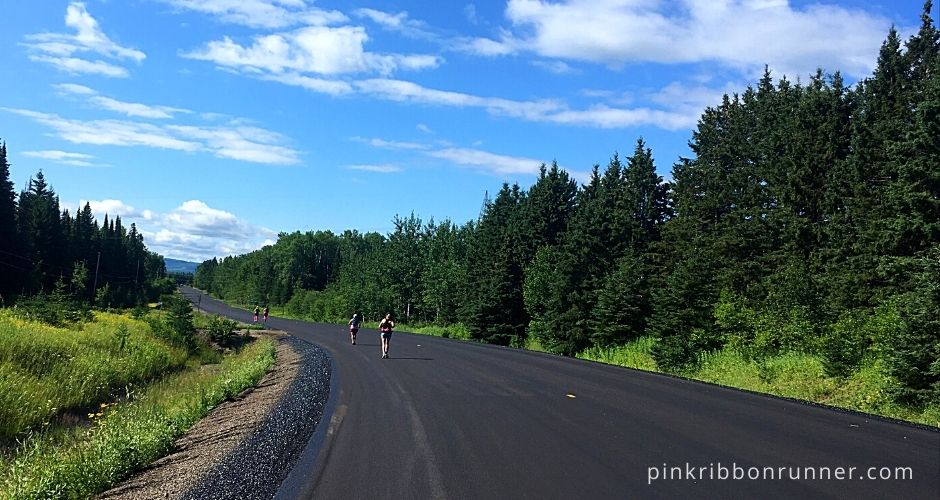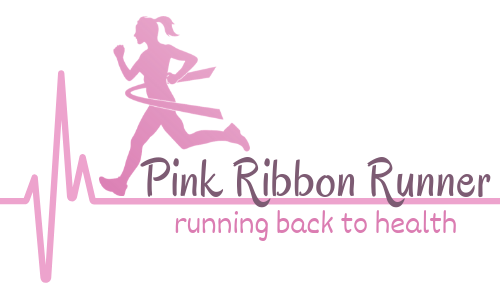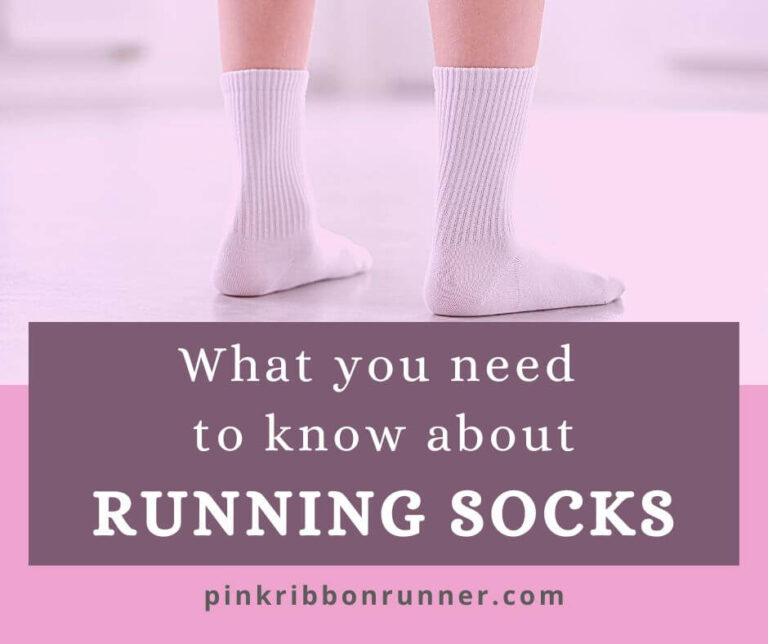Get the Most Out of Your Walk – A Cancer Survivor’s Guide
Walking seems easy enough, right? Almost anyone can walk. It is especially good for cancer patients and survivors. But a walk can be so much more than just a walk. A walk can promote a healthy body, clear mind and happy spirit. Let’s explore the benefits of walking and learn how to maximize your walk.
This post contains affiliate links. As an Amazon Associate, I earn from qualifying purchases.
Updated November 22, 2021
More than Just a Walk
I was walking in a local nature conservation area with my husband on the weekend. We were quiet, not talking and just enjoying the surroundings and each others company. The sun was shining, but we were sheltered from its heat in the shade of the trees. The birds were active and singing happily. As we walked along the path, I became lost in the sound of the creek water flowing and my usual loud and incessant thoughts grew softer.
I needed this walk that day. I noticed my body, especially my shoulders, had become so tight from the stress of a busy week. Although I had accomplished a lot, I still had so much more to do. I didn’t realize the effect that all this was having on my body, until that very moment.
Do You Know the Full Value of Walking?
Once I discovered how stressed my body was, I focused on relaxing my shoulders. Listening to my breathing, I willfully slowed it down. I concentrated on my footsteps and the sound of the forest. And my mind started to clear and my body relax. My pursed lips softened and started to form a smile. My stress melted away and I allowed myself to be happy in that moment.
And then a thought popped into my cleared mind. Do others experience this? Do people truly know the full benefits of a walk? It isn’t JUST a walk. Going for a walk can be so much more.
I looked over at my husband and announced that I had a new idea for a blog article. He helped me fine tune what I wanted to tell you about getting the most out of your walk. And this article was born.

Benefits of Walking
To truly understand how to maximize a walk, it is important to look at the benefits of walking. You need to know what your goals are before you can achieve them.
Knowing what a walk can do for you helps you to figure out what you ultimately want to get out of it.
If you are just looking for some exercise, a walk can do that for you. But if you want the full impact of a walk, you need to know what that full impact means.
Let’s explore the benefits of walking.
Walking is a Low Impact Exercise
Walking is a fabulous low impact form of exercise. If you are just recovering from an illness, have joint troubles or are getting back into fitness, this is the perfect place to start.
Walking is at the top of the list in most exercise guidelines for cancer patients and survivors.
Almost Anyone Can Walk
Most of us learned to walk before we were two years old. We walk from our cars to the store. We walk to our mailboxes. And, even most sedentary people, walk a little around their houses. It is a natural and ingrained movement for us. Most people can go for a walk.
Walking Heals Your Body
As an exercise, walking can get your breathing up and heartbeat going. This helps strengthen your heart and lowers blood pressure. Muscles get stronger and more efficient. It builds endurance over time if you walk regularly. Your bones become stronger, as well.
But the positive effects on your body can happen even in that same day. Experiencing the physical benefits of walking can happen immediately. Joints become lubricated and less painful. A walk can work out the stiffness in your body.
And walking will boost your immunity and energy levels. When I feel tired at the end of a long day, an evening walk can give me a boost that lasts until bedtime.
Speaking of bedtime; walking also improves sleep. Just one walk can release your internal sleep hormone, melatonin, which helps you fall asleep and stay asleep longer.

Walking Soothes Your Mind
Just as I experienced that day in the woods, walking is a way to relieve stress. After about 20 minutes of a brisk-pace walk, your brain and body release chemicals called endorphins. These are mood boosting chemicals and can help reduce symptoms of anxiety and depression.
Walking also clears your mind. You think more clearly during and after a walk. You have better attention, memory, and focus. A walk can also boost creativity. These benefits of walking were recognized by many business gurus, such as Steve Jobs and Mark Zuckerberg. Walking can be a way to hold very productive and innovative meetings.
Walking Boosts Your Spirit
There are many scientific studies that tell us that walking increases our life expectancy. People who walk regularly live longer.
Not only do walkers live longer, but they are generally happier people. Walking has been shown to cultivate gratitude and kindness. It also gives you more confidence.
“Walking is man’s best medicine.”
– Hippocrates –
15 Tips to Get the Most Out of Walking
Now that you understand how beneficial walking can be, let’s look at how to you can make the most of it.
1. Walk Daily
The more you walk, the more benefit you gain. Some benefits, like boosted energy and better sleep, can happen with just one 5 to 15 minute walk. However, some benefits need more time, like building muscle and strengthening bone.
Walking can make you feel good. So, why not feel good every day? It is a fantastic way to get that minimum 150 minutes of weekly aerobic exercise in.
But if you walk daily, don’t wear yourself out. You shouldn’t walk briskly for long periods of time every day.
Vary the intensity. Some days walk fast, then walk slower the next day.
Vary the duration. Maybe walk for an hour one day, then 15 minutes the next.
Walking doesn’t have to be all or nothing. It can be random or in a scheduled pattern. But it shouldn’t be the same intensity every day of the week.
2. Track your walks
Use an app, pedometer, activity tracker, spreadsheet or just paper and pen. But track your walks. It will help you know when to increase your pace and endurance safely.
And it may also inspire you to continue. It feels so satisfying to look back and see how much you have improved and how far you have walked.

3. Ease into Walking
You don’t want to just go out and walk a lot all at once, especially if you haven’t done this before. It is no fun being stiff and sore the next day from over-exertion. And it isn’t necessary to see the benefits. Most studies tell us that slow and steady are best for health. Build to longer and faster walking over time.
4. A Moderate Intensity Workout
You do want to get your heart rate up though. You need to walk at a pace that is classified as “moderate intensity”. This is the level that scientists have found the biggest health benefit.
What is “moderate intensity”? Another way to put it is “somewhat hard”. You should be able to talk to a friend, but have trouble singing. You find yourself breathing a little harder, but you aren’t out of breath. And, you may sweat a little, but are not drenched.
It is okay if you aren’t able to walk at a moderate intensity yet. But make that a goal to reach as you progress.
5. Warm Up Before Walking
Warming up before you go on your walk is important. Do a few butt-kicks and high-knee dynamic stretches to get those legs loosened up. Start walking at a slower pace for a few minutes, then gradual increase to that moderate intensity or brisk pace we talked about earlier.
Warming up your muscles will help prevent injury and make you less sore the next day.
It is especially important to warm up those muscles in cold weather. Yes, you should be walking year-round, if possible.
6. Proper Walking Form
Using proper form and posture on your walk will help build the right muscles and prevent injury. You should be standing tall, leaning ever so slightly forward from the hips. Your core muscles should be engaged.
Take smaller steps with a higher foot turnover. Land each strike on the mid-foot. Use your arms to swing you forward, but never cross them over your chest. Your arms should be moving in the direction you want to go… forward.
Don’t over think this, though. You have been walking since you were about 2 years old. I will bet you are proficient at it. And if you think too much about your form, you may stiffen up. Stiffening up wastes energy and makes you sore.
Walking should be relaxed. Shake out those shoulders and hands from time to time to keep it loose.
Sore muscle and injury can result from bad posture. And you want to get the full benefit of building your posture muscles when you are walking, so do pay some attention to your walking form.
Your posture and form will tend to fall apart when you are tired, so check in with your body towards the middle to end of your walk.
7. Keep Walking Interesting
Sometimes walking can get boring. You should be enjoying your walks. It makes it easier to get out there daily if you like walking. So spice them up from time to time.
You can play pace games. Pick a landmark, maybe a lamppost, and walk faster to the next one. Then walk slowly for two lampposts, and fast again for the third. Make a game out of it. Challenge yourself a little. Time and distance will fly by.
Walk in an exciting new location. Maybe find a nature trail to explore.
Walk with a friend. Catch up on old times.
Listen to music or a a podcast. I love listening to relaxation music softly in the background on my solo city walks.
Find ways to relieve the monotony of walking the same walk everyday. Unless, of course, you find that enjoyable.
8. Turn Off Your Cell Phone
Unless you are using a smartphone app for tracking or listening to music, leave your cell phone at home. Remember one of the benefits of going for a walk is to reduce stress and clear your mind. How can you do that when your phone keeps dinging, ringing, and buzzing?
Or, at least, just turn off the notifications.
“In every walk with nature, one receives far more than one seeks“
– John Muir-
9. Walk in Nature
Trees and plants give off chemicals that boost our health. Science has shown the benefits of just being out in nature. Why not multitask and exercise in nature? Go for a walk in the woods. It will add so many more benefits to your efforts.
Nature sounds help us relax and unwind. Yes, you can go download a nature CD. But it is so much better to get out there and experience the sounds, along with the beautiful sights and wonderful smells, for yourself.
10. Walk on Softer Surfaces
Sidewalk concrete is one of the hardest surfaces to walk on. Walking solely on concrete can be hard on your joints. It is good to find a route that adds variable surfaces to your walking.
Road asphalt is a little softer. Just be careful, pay attention and follow the rules of traffic. Whether you have the right of way or not, always yield to traffic. Cars are bigger and stronger than you, no matter how badass you are.
Better yet, find a nice soft nature trail to walk on. Dirt and grass are much softer for your body to walk on.
Very soft surfaces, such as sand and snow can be difficult to walk on, as it is harder for your feet to grip. These surfaces can be a great workout, but they may slow down a little.
Pool walking can be a great way to exercise if you have an injury or you need very low impact exercise. It is exactly how it sounds. The buoyancy of water will take your body weight off your joints yet work your muscles. It is fun too.

11. Use Walking Accessories
Walking poles can help you with balance and give you the added benefit of an enhanced upper body workout. Hand weights can help give you that extra zing for your upper body too.
But you shouldn’t start with these accessories just yet. If you are relatively new to walking for exercise, then your arm swings should be enough of a workout. Add the accessories later if you feel you need to amp up your routine.
12. The Right Gear
The gear that you should consider right now are good walking shoes, athletic socks and wicking clothing.
Good shoes help you keep good form, prevent injury and blisters, and make walking more comfortable.
Socks should keep your sweat away from your skin, keep your feet in place in your shoes and provide the right padding in the right spots.
And because you are supposed to get a little sweaty with a moderate intensity walk, having dry-wicking athletic wear is best. You want to avoid cotton clothes, as these hold moisture and promote chaffing. Trust me, I have been there. You don’t want to experience that. Ouch!
13. Take Along Water
Staying hydrated is so important. If you experience more than a 2% loss of body water, you will feel the effects of dehydration, such as sluggishness, dry mouth, trouble concentrating, crankiness and even pain and muscle cramps. We can lose as much as 6 – 10% body water during a walk.
So take a water bottle along. Sip on it at regular intervals, even if you don’t feel thirsty.
I like these little grip-free hand-held water bottles for walking. You can relax your grip and don’t have to hold the bottle on your hand. It has a handy pocket for your keys and some money too.

14. Stretch After Your Walk
Cooling down is so important to ease your body back into normal living. Slow down during the last 5 to 10 minutes of your walk. Then do some gentle stretches afterwards.
Stretch your calves, quads and hamstrings. Don’t forget about your arms and shoulders. They had to work too.
15. Listen to your body
Always listen to your body. Walking is a great way to tune in with yourself. Does anything hurt when you walk? Is your breathing nice and regular? Where is that stress and tension happening?
I notice my stress smack between my shoulder blades when I walk. I will do some shoulder rolls and try to relax this area. When I feel it here, I know the stress is having an effect on my body. So, I will do some deep breathing and meditation exercises to help me feel better.
If you aren’t feeling well, slow down, keep your walk short or skip it all together. Adjust your distance and pace based on how you feel.
Tell your doctor that you are walking regularly. Your oncology team will likely cheer you on. But they may also have some tips for you to help make it easier and more beneficial.
Read More on Walking
Walking Back to Health and Fitness
Health Benefits of Trees and Hiking
Walking Away Side Effects of Cancer Radiation Therapy
Now go for a walk!
I hope that helps you get the most out of your walk. Walking is such a fabulous and natural way to stay healthy. I firmly believe that being active and eating healthy foods is the path to wellness. Don’t you?










Thanks for these ideas
You are very welcome. I am glad you find them helpful.
Walking and swimming are my best forms of exercise.
Some of my most peaceful moments are when I am walking. I have a lovely walking path along the river. Great workout for body and soul.
Lovely article! I love to walk and agree that it soothes our mind! Walking in the nature feels so spiritual to me! Great tips, thanks for sharing!
Walking is such a simple and refreshing exercise that many people ignore. I lost most of my postpartum weight by walking 2 times a day in beautiful weather. Thank you for the post.
I am so glad you found walking too!
I love going for walks, thanks for all the great tips!
Great tips. I love walking and now its a habit. Thank you for sharing all the benefits of walking.
I have not given walking much importance till now. But you have written so many good things about the habit of walking. Will try to follow.
Fabulous! I hope you love it as much as I do. It is great exercise.
So many take walking for granted. I always feel so refreshed and wonderful after a good walk. I actually find it’s my time to think, plan, work things out in my mind and just enjoy me time. While I enjoy walking with others I love walking with my dogs most. Great information. I wasn’t aware of all the benefits I was getting from something as simple as walking.
Have you heard of ‘Forest Bathing’? I think you would be interested in it! I actually wrote a post about it on my blog. I love walking my dogs and walk them every morning now while the weather is nice!
Yes, I have heard of forest bathing. Talked about it in an earlier article on my blog too, called Health Benefits to Trees and Hiking. Trees are wondrous beings. So many benefits of walking out in the forests. I am so glad you found out about this too and are promoting it on your blog.
Excellent Post Everyone Should Read. We always make a point of taking a good long walk at least once a day. It helps to own a dog as well to keep motivated. My wife has an app that tracks our walk, records the distance and much more. Its a great way to start your morning and end your end with good healthy walk. 🙂
Wonderful. I love tracking my walks and watching the distance add up. It is amazing how walking a couple of miles everyday adds up over a month or a year.
Wonderful suggestions. I started walking and have noticed a decrease in my blood pressure.
Fantastic. I am so happy you noticed this positive effect on your health. Something as simple as a walk can do so much for us.
Walking is amazing! I run a lot, so walking is my time to relax and spend time with my husband. It’s so nice! We move finding walking trails in our area =)
During COVID, I missed my running buddies. Walking with my husband has been my social exercise substitute and it has been wonderful. He runs too fast for me, so we don’t run together. But walking and hiking are activities we enjoy doing as a couple.
Unfortunately, I don’t have much nature around me. I do try to change up my walk (make it interesting) by walking to different destinations. There are several Free Little Libraries, my mom’s house, one of my favorite lunch spots, some thrift shops, and a Dollar Tree within walking distance. I have even walked to my bank. Mixing it up helps a lot. I do need to start carrying water. Walking sticks may be the next thing I try. Great article.
I have always loved walking but since the lockdown, in March I am doing it more than ever. It’s almost like my body craves getting out into nature daily. It’s been really great for my body and mind!
Tracy
I can’t wait for the weather to cool down where I’m at so I can start walking again. At the beginning of quarantine I started walking daily and I think it was the best thing for my mental health.
These are all really wonderful tips. I’m usually walking my dogs when I go out but I think I’m going to try and take some time to go for a walk alone. I love spending time with loves but your article made me crave some time to get some exercise and enjoy nature and some quiet time to reflect. Thank yoU!
I love these tips thanks for sharing
Great read. Keep Walking !
I was never much of a walker until recently. Last fall I broke all the bones in my leg and it’s been a long road to recovery. For the past several months I’ve been walking every day, and it’s amazing how much I’ve come to enjoy it! I started out barely doing 1/4 mile very slowly with balance help, and now I’m up to almost 4 miles at a brisk pace! Being quarantined, these walking breaks are mini-dates for my husband and I, as we get out of the house and have some alone time! We look forward to them every day! I couldn’t agree more with everything you wrote! Walk, walk, walk!
I feel as if you took the words right out of my mouth. I have walked with my son since he was a few weeks old and now he walks on his own with me for at least a mile. It’s our bonding, learning, exercise, destress…time. We both look forward to it daily.
I love to walk! It is a peaceful exercise. It brings me peace of mind.
Loved this article. I have a chronic illness and walking is all that I am left with so I cherish it as much as you seem to do in this article.
this is a quality post on how to get the most out of walking.
I particularly like the benefits section.
thank you so much for sharing!
I love walking! And your tips! Thank you! I will go for a walk now :).
I love a good walk all day everyday. I try as much as possible to put in 10k steps a day to also help out with the calorie burn. And its just so interesting that you have so much info on walking . Thankyou for this
Walking is a physical exercise I was able to pick-up at this time with COVID. It is truly an unplugging experience and allowed me to re-connect with my neighborhood and explore streets I’ve never seen.
I love walking, I try to do 10k steps everyday 🙂